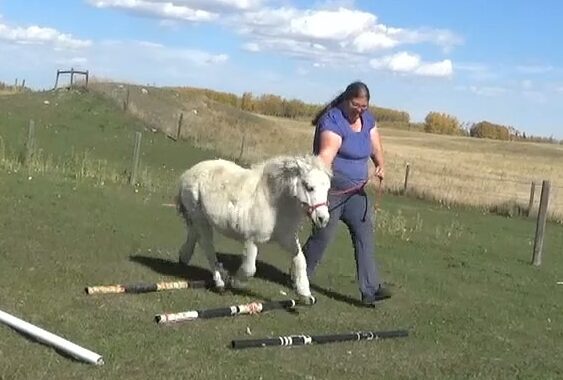Habits are things we do every day, without even thinking about them. Some are good, productive habits (brushing our teeth, exercising), while others aren’t so beneficial (biting our nails, eating potato chips).
But habits can be very useful!
I suspect that every one of us has something that we’d like to do more consistently with or for our horses. And I suspect we all already have things we do regularly with or for our horses.
Habit Stacking
Habit stacking is a great way to remember to perform a new behaviour by adding it on to an established behaviour. As an example, recently my chiropractor wanted me to balance on one foot a couple times a day to help strengthen my injured ankle. He didn’t tell me “stand on one foot for 3-5 minutes twice a day” because probably that would be forgotten. Instead he told me “stand on one foot while you brush your teeth” – and I mostly always remember! Instead of adding a completely new step to my daily routine, I just have to add something on to a step I was already doing, which is makes it much easier and more likely to be successful.
We could easily use this concept in our horse lives as well. Maybe we want to practice a new skill every day – we could attach it to a chore we already do, like feeding, or mucking out, or add it to an activity we already do regularly, such as adding stretching following a drive.
Attaching the new behaviour you want to do more of to one you’re already doing will make you much more likely to be successful than you would be by simply saying “I’m going to (insert new behaviour here)”
Set Up
Half the battle in adding something new to your routine is being set up to do it easily. It’s easy to drive your horse regularly once you ARE driving them regularly, but if you’re just getting back to it you’re probably going to have to refit the harness, and maybe put air in the tires of the cart or other maintenance, and that can be enough to derail you, when your fun little drive turned into a marathon of getting ready chores before you ever get to it.
I find it very helpful to separate the set up from the activity whenever possible. Thinking, “I have to dig out the harness, and check that it’s in good shape, and fit it to my horse, and get the cart out and dust it off, and check the air in the tires, and and and and” is going to be discouraging and overwhelming. Instead, separate the getting ready from the activity: “Today I’m going to check over the harness and fit it to my horse. Tomorrow I’m going to check over the cart and clean it up and check the tires. Then the next day I’ll drive.”
It’s the same for setting up obstacles or any number of other activities – if you can set things up the day before, it’s going to make it much easier for you to follow through on actually doing the thing. I always try to plan setting up the monthly agility course for a different day (or at least a different session) than actually starting to practice it, because setting the course up is absolutely my very least favourite part. While sometimes I can’t resist going to get the horse as soon as it’s ready to give it a try, other times I’m exhausted and frustrated just from figuring out logistics or fighting with the wind, and if I tried to work with a horse I wouldn’t be a very good trainer, so it’s good I haven’t put those expectations on myself.
If you’re having trouble getting started, break down the getting ready and set up organizational tasks into your regular time you’re making a habit of, instead of trying to do it all in an overwhelming marathon session.
Where to start?
I’ve taught most of my horse’s tricks during feeding, and the last couple weeks I’ve been doing 10 minutes of agility practice every evening at the end of my chores, which has the added bonus of my agility horse catching on to the new habit and he’s always waiting at the gate for me!
If you would like some more ideas to help you get started, sign up below for a free PDF I put together to help you find the time in your day, and suggestions of the skills that fit in well to the spaces!
